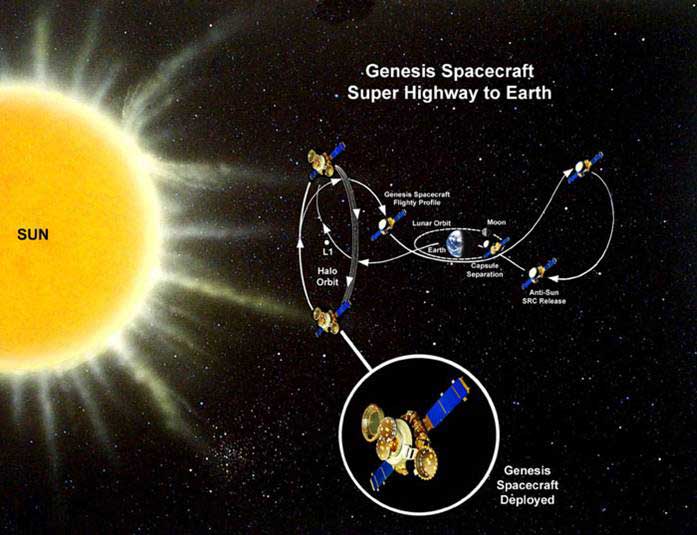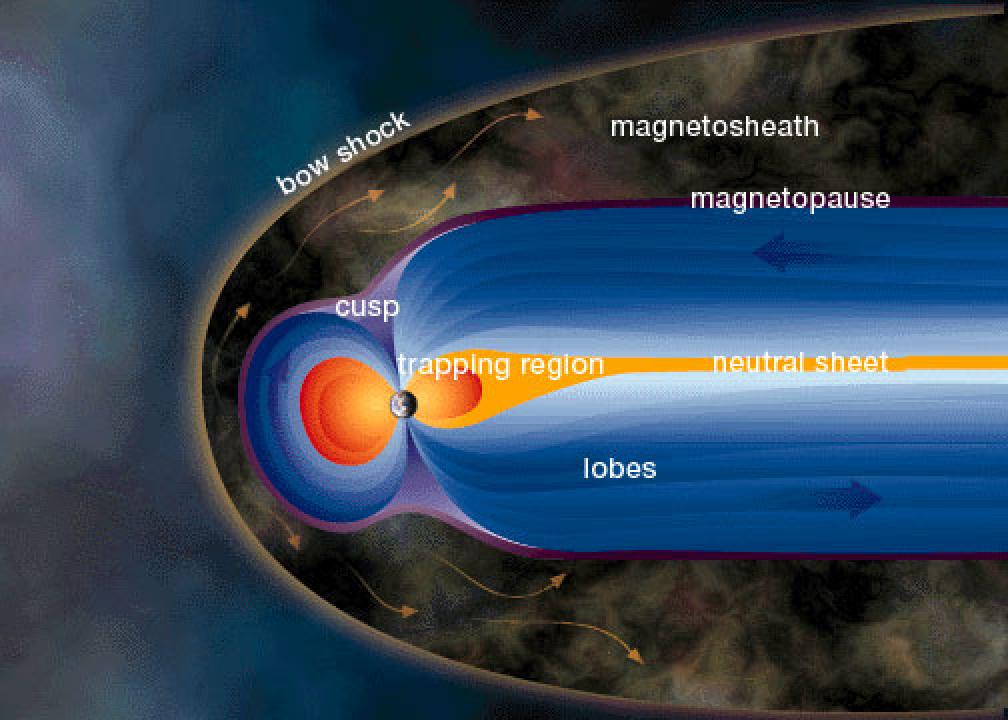
 Copyright © Michael Richmond.
This work is licensed under a Creative Commons License.
Copyright © Michael Richmond.
This work is licensed under a Creative Commons License.
The goal of NASA's Genesis mission is to improve our knowledge of the solar composition by bringing back pieces of the Sun.
What? Did I really mean "bring back pieces of the Sun?"
Yes! It may not be quite what you think. The spacecraft doesn't actually go all the way to the Sun, scoop out a cloud of gas, and return to Earth. Instead, it takes advantage of the solar wind, which blows small particles -- individual atoms and ions, mostly -- of the Sun out into space.

The spacecraft was launched on August 8, 2001. It spent several years in space orbiting the Sun near the Earth's Lagrangian point: far enough away from the Earth to escape the Earth's magnetic field, which deflects many of the electrically charged particles in the solar wind.

In order to trap a pristine sample of the solar wind, the Genesis spacecraft moved out beyond the influence of the Earth's magnetic field, turned itself towards the Sun, and opened several collecting devices:

Particles in the wind smash into the exposed plates, and some particles stick. Over the period December, 2001, to April, 2004, Genesis slowly accumulated many samples of solar material. The spacecraft then retracted its collecting plates, sealed them tight, and headed back for Earth. Today, Wednesday September 8, 2004, the sample-return portion of the spacecraft will re-enter the Earth's atmosphere, slow down via a heatshield, then deploy a parachute. But before it reaches the surface, we hope,

a helicopter will snag the parachute and gently reel it in. This will avoid a hard "bump" upon landing, which might knock the solar particles off the collection plates.
Will the spacecraft re-enter successfully? Will the parachute deploy? Will the helicopter(s) catch it? Tune into NASA Select TV after class and find out.
 Copyright © Michael Richmond.
This work is licensed under a Creative Commons License.
Copyright © Michael Richmond.
This work is licensed under a Creative Commons License.